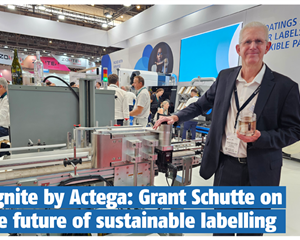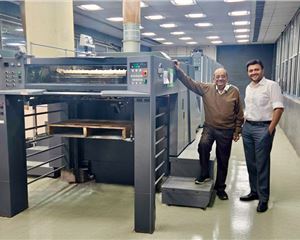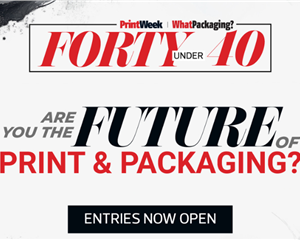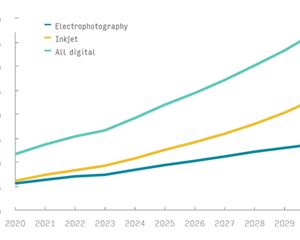Everyone connected with labels are talking about flexo technology, about how flexo is evolving. Some label equipment manufacturer talk about reduced web-length. Some are talking about mechanical advancements in presses. Some enforce those very mechanical components, employing electronic features to make the presses more efficient.
Vinsak, the Indian representative for Lombardi hosted an open house on 22 August, 2015 that showcased the features of Lombardi Synchroline 430 flexo press. Gurgaon-based A&A Labels, took delivery of India’s first Lombardi press, the Synchroline 430, with an eye on expanding its label business. “This is our seventh flexo press. At present, we are doing four lakh sq/meter of labels per month and that's only a fraction of the demand for labels,” said Anubhav Jain, one of the two directors at A&A. Saurabh Jain, his cousin, is the other director.
Jain said he opted for Lombardi Synchroline for several reasons, among them was the level of automation the press offers. “First of all, the press has a dramatically low number of operations
needed by the operator to set up a print job. And that makes the press easy and quick.”

The Synchroline 430 can accept rolls in sizes up to 450, has a pre-register system, a Corona treatment unit, a Lombardi patented Air Blade System (ABS), and a servo motor on each of the eight units of the press. The press at A&A is also delivered with a die-cutting unit, an overhead adjustable relam-delam and cold-foiling attachments.
Explaining what went into developing the Synchroline, Massimo Lombardi, international sales manager for the company, told the PrintWeek India team, “The Synchroline was born as the servo motor upgrade to the Flexoline model, which was launched in 2007. Some of the mechanical components were already present on the Flexoline press got a dramatic deflection.”
Lombardi added, “We tried to conceive a press with as less as possible the number of regulations, that are common on our competitors machines.”
As a result, the Synchroline, launched in 2011 got the servo motors powered by a new electronic board with a system of register control, to make the press more accurate; a register control in real time that continuously checks for the consistency during the acceleration phases at high speed; and also the set up of the next print unit of the same job. It then evolved with an ABS that calculates and exerts the amount of pressure required for the worn out blade, in this case across the blade, at a touch of a button.
“We believe the print unit of the Synchroline is a masterpiece of mechanical accuracy and simplicity,” said Lombardi.
Worldwide, Lombardi has installed 135 Flexoline and Synchroline presses.

For Vinsak, this is a beginning of the many more to come, said Ranesh Bajaj. “It’s an affordable machine, a versatile machine that can enable a labeler to not only print on films but mono cartons. It gives the flexibility to bounce between films and labels with finishing options,” said Bajaj.
Alongside was the Vinsak LSR range of slitter rewinders with 100% defect detection systems installed by A&A last November.
Later in the evening Vinsak also hosted a seminar, the highlight of which was a panel discussion on packaging and brand protection.
 The Synchroline 430 can accept rolls in sizes up to 450, has a pre-register system, a Corona treatment unit, a Lombardi patented Air Blade System (ABS), and a servo motor on each of the eight units of the press. The press at A&A is also delivered with a die-cutting unit, an overhead adjustable relam-delam and cold-foiling attachments.
The Synchroline 430 can accept rolls in sizes up to 450, has a pre-register system, a Corona treatment unit, a Lombardi patented Air Blade System (ABS), and a servo motor on each of the eight units of the press. The press at A&A is also delivered with a die-cutting unit, an overhead adjustable relam-delam and cold-foiling attachments. For Vinsak, this is a beginning of the many more to come, said Ranesh Bajaj. “It’s an affordable machine, a versatile machine that can enable a labeler to not only print on films but mono cartons. It gives the flexibility to bounce between films and labels with finishing options,” said Bajaj.
For Vinsak, this is a beginning of the many more to come, said Ranesh Bajaj. “It’s an affordable machine, a versatile machine that can enable a labeler to not only print on films but mono cartons. It gives the flexibility to bounce between films and labels with finishing options,” said Bajaj.











 See All
See All